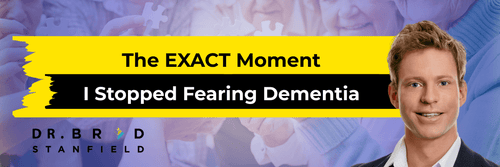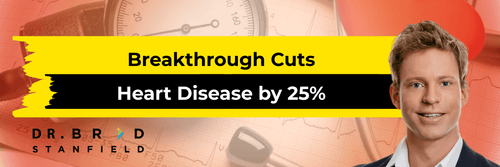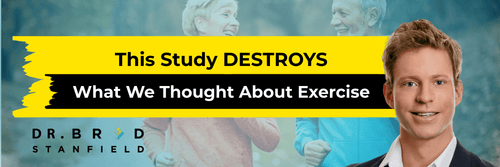One in three people who break their hip will be dead within 1 year. After 10 years, only 8.5% will be alive, compared to 39.8% in the general population [1].
That’s terrifying. And when I was an orthopedic resident assisting in hip operations, I could see why the post-surgery death rate was so high. These patients generally had incredibly weak bones. A hip fracture is a marker of frailty. We’re the ambulance at the bottom of the cliff. The build-up to a hip fracture is decades in the making, and the trouble begins much earlier than most realize. The good news is that we can do something now to prevent problems later. And the earlier we start, the better.
Table of Contents
- Why Bone Loss Happens
- How to Prevent Bone Loss with Exercise
- The Role of Calcium, Vitamin D, and K2
- Lifestyle Risks to Avoid
- Should You Get a DEXA Scan?
- What to Do If You’re Diagnosed
- Final Thoughts
- References
Why Bone Loss Happens
Bone is a living, dynamic tissue. It’s constantly undergoing reconstruction—old bone is removed and replaced with new bone. When we’re young, this process maintains bone mass and strength. But as we age, bone starts to break down more quickly than it is replaced. The result: weaker bones [2].

What’s surprising is how early this decline begins. During childhood and adolescence, bone mass increases, peaking in the 20s—earlier for women, later for men [3]. After that peak, bone quality starts to slowly decline, with the process becoming noticeable around age 40 [2].
Importantly, bone loss doesn’t mean bones are shrinking in size—they’re just thinning inside, losing the density that gives them strength. Like termites in wood, the structure remains, but it’s hollowed out.
The rate of bone loss also differs between men and women. After menopause, women lose bone at an accelerated rate—3% to 5% per year for about 5 to 7 years [4].
Globally, around 200 million people have osteoporosis [5]. In the U.S., about 27% of women and 6% of men over age 65 have it [6].
Many think this is a concern only for older adults. But what we do when we’re younger significantly affects our risk later. And when our bones become too weak, fractures follow. Only around 40% to 60% of people who fracture their hip recover the ability to live as they did before [6]. The health consequences are enormous.
How to Prevent Bone Loss with Exercise
Fortunately, there’s a way to reduce risk: exercise.

Bone, like muscle, adapts to the stress we place on it. If we don’t put enough strain on our bones, cells that make bone become less active, while those that break bone down become more active [2]. But when we load our bones—through impact or lifting—bone-building activity increases [2].
One clinical trial showed that a 20-week high-intensity exercise program significantly improved bone structure in older women [7]. An earlier meta-analysis found that exercise could prevent or reverse about 1% of bone loss per year in women [8].
So what kinds of exercises are best?
Research points to combining both external loads (like running and jumping) and internal loads (like weightlifting). This combination is most effective for stimulating bone growth [7].
The takeaway: resistance training, impact training, and high-intensity workouts like jumping exercises are all beneficial [5]. They improve bone density and also increase muscle strength and balance, reducing fall risk.
The Role of Calcium, Vitamin D, and K2
Many patients ask about calcium supplements. Do they help?
The answer is complicated.

Some studies show calcium supplements reduce fracture risk [9]. But others—especially those with lower risk of bias—show no benefit at all [9]. And excessive calcium may carry health risks.
Personally, I take Vitamin D3, K2, and Magnesium to support bone health. Vitamin D3 helps absorb calcium. Vitamin K2 directs calcium into the bones. And magnesium supports bone formation [10]. Together, they create the right internal environment.
Still, supplements are not the main event. Exercise is the main driver. Supplements just ensure you have the necessary raw materials. Without the exercise stimulus, they won’t be effective.
Lifestyle Risks to Avoid
If you’re trying to keep your bones strong, two things are worth avoiding: smoking and excess alcohol.
Both have been shown to increase the risk of bone loss and fractures [11].
Smoking accelerates bone loss, and alcohol impairs bone formation. Cutting back on these can make a big difference.
Should You Get a DEXA Scan?
Osteoporosis is a silent problem. Most people don’t know they have weak bones until they suffer a fracture. That’s where screening comes in.

The most common tool is a DEXA scan, which measures bone mineral density. This, combined with risk factors like age and sex, can estimate fracture risk.
But should everyone get screened?
Not necessarily.
According to the U.S. Preventive Services Task Force, women aged 65 and older should be screened. So should younger postmenopausal women at increased risk—for example, those with low body weight, smoking habits, or a family history of fractures [6].
Screening in these groups has been shown to reduce fracture rates. One meta-analysis showed a 17% lower risk for hip fractures among screened individuals [12].
For men, the evidence is less clear. The task force couldn’t make a firm recommendation due to insufficient data. The decision should be individualized [6].
What to Do If You’re Diagnosed
If screening shows low bone density, the first line of action is still exercise and nutrition. But for high-risk individuals, doctors may recommend bisphosphonates—a class of medications that slow bone breakdown.

They can reduce hip fracture risk by around 35% over a period of 2 to 4 years [13]. However, long-term use carries some rare but serious risks, like atypical fractures and jaw bone problems [13].
That’s why treatment should be a shared decision between patient and doctor, carefully weighing risks and benefits.
Final Thoughts
Bone loss is a hidden epidemic that begins much earlier than most of us realize. But it’s also one of the most preventable. By prioritizing high-impact exercise, making smart nutrition and supplement choices, and avoiding harmful lifestyle habits, we can build a strong skeletal foundation for life.
References
1. https://www.frontiersin.org/journals/surgery/articles/10.3389/fsurg.2024.1359648
2. https://pmc.ncbi.nlm.nih.gov/articles/PMC3383520/
3. https://pmc.ncbi.nlm.nih.gov/articles/PMC4402109/
4. https://jamanetwork.com/journals/jamainternalmedicine/fullarticle/486688
5. https://pmc.ncbi.nlm.nih.gov/articles/PMC9990535/
6. https://jamanetwork.com/journals/jama/fullarticle/2829238
7. https://pmc.ncbi.nlm.nih.gov/articles/PMC6964965/
8. https://pubmed.ncbi.nlm.nih.gov/10367023/
9. https://www.bmj.com/content/351/bmj.h4580
10. https://www.frontiersin.org/journals/public-health/articles/10.3389/fpubh.2022.979649/full
12. https://jamanetwork.com/journals/jama/fullarticle/2829239
13. https://www.acpjournals.org/doi/full/10.7326/M22-0684























































